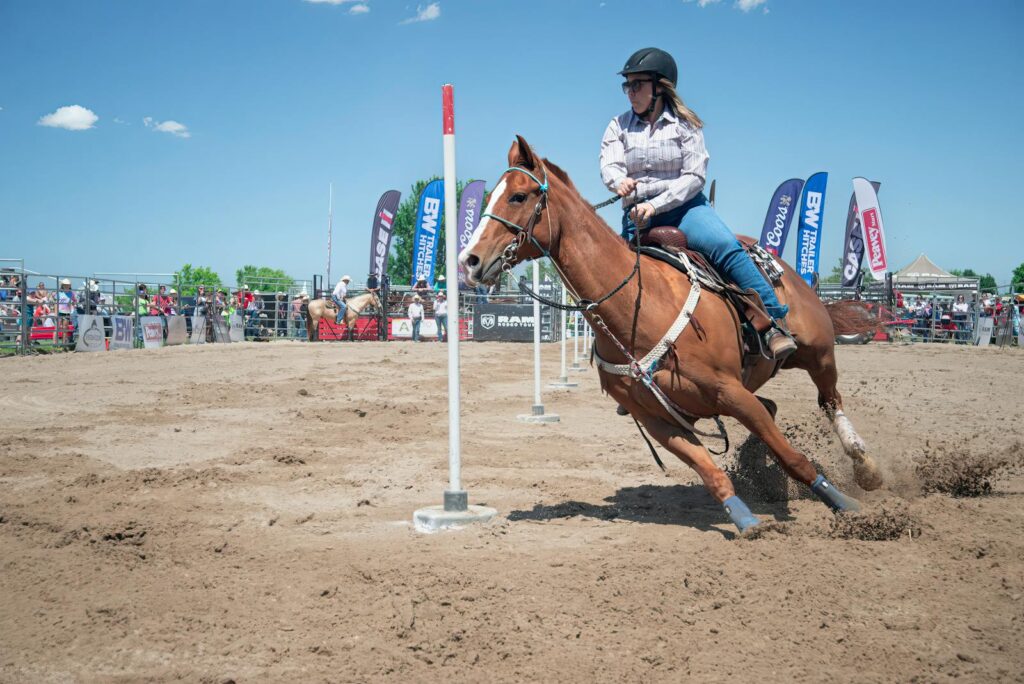Nervous horses present unique challenges for riders and trainers alike. These sensitive equines often struggle with new environments, obstacles, and training exercises, which can lead to frustrating training sessions and potentially dangerous situations. Ground poles – simple wooden or plastic rails placed on the ground – offer an effective, gentle approach to building confidence in these anxious equines. By introducing structured exercises that create focus and predictability, poles can transform a nervous horse into a more self-assured partner. This comprehensive guide explores how strategic pole work can help nervous horses overcome their fears, build physical awareness, and develop the confidence needed for various riding disciplines.
Understanding Equine Anxiety and How Poles Can Help
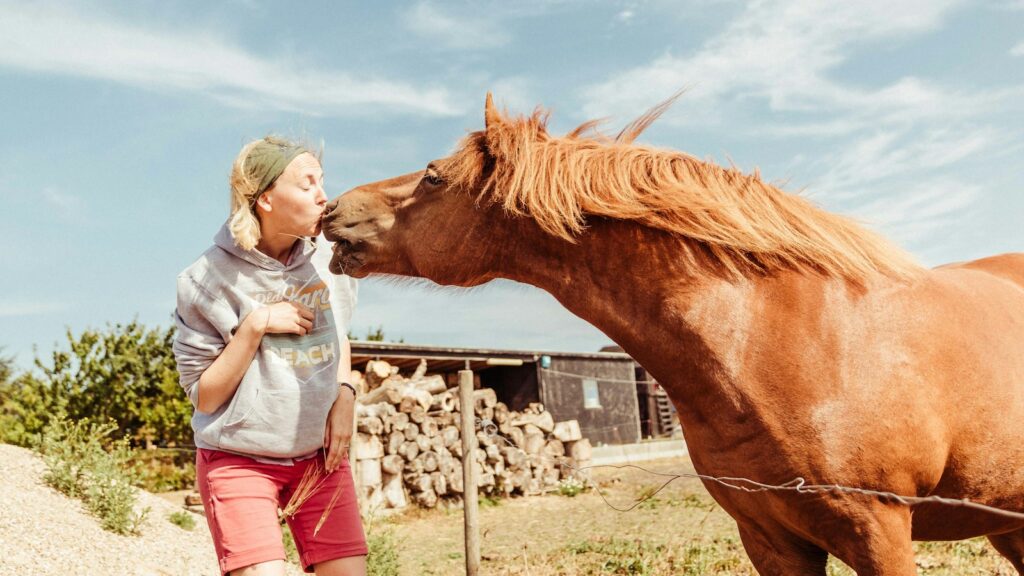
Horses are prey animals with highly developed flight responses, making anxiety a natural part of their behavioral makeup. When a horse experiences fear or uncertainty, the sympathetic nervous system triggers, creating physical responses including elevated heart rate, muscle tension, and heightened sensory awareness. Poles work wonderfully with anxious horses because they provide a clear, visible focus point that demands mental concentration. This mental engagement interrupts the anxiety cycle by redirecting the horse’s attention away from perceived threats and toward the task at hand. Additionally, the rhythmic, predictable nature of pole work creates a sense of security and accomplishment as the horse successfully navigates each pole, building confidence through positive experiences rather than force or punishment.
Essential Equipment for Pole Work

Before beginning pole exercises, gathering the right equipment ensures safety and effectiveness. Standard jumping poles measuring 10 feet long and 3-4 inches in diameter work well, though lightweight PVC pipes can serve as more affordable alternatives for beginners. Pole risers or blocks allow for elevation when advancing to raised pole exercises, while bright pole wraps can enhance visibility for horses with visual concerns. Safety should always be prioritized – avoid metal poles that could cause injury if struck, and ensure wooden poles are splinter-free with no protruding nails or screws. For maximum versatility, collect at least 6-8 poles to create various configurations, and consider investing in pole markers or cones to help define exercise boundaries and provide additional visual guidance for both horse and handler.
Creating a Safe Introduction to Poles

First impressions matter tremendously with nervous horses, making proper introduction to poles crucial for building rather than damaging confidence. Begin in a familiar environment where your horse already feels comfortable, such as their regular riding arena or round pen. Initially place just one or two poles in an area visible from a distance, allowing the horse to observe them during regular activities before any direct interaction. When ready for closer investigation, lead the horse to the poles using a loose lead rope, allowing them to approach, sniff, and examine the objects at their own pace without pressure. Reward even small signs of curiosity or calmness with praise, treats, or gentle reassurance. For extremely anxious horses, consider starting with poles painted in more natural colors rather than bright patterns that might seem intimidating, gradually introducing more visually stimulating equipment as confidence grows.
Ground Handling Exercises Before Mounting
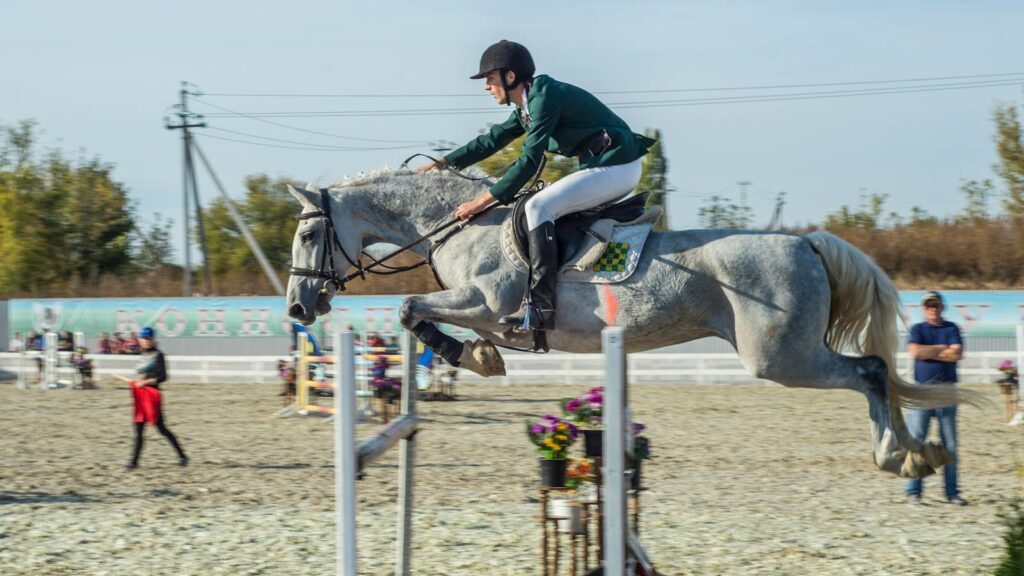
In-hand work creates a strong foundation before attempting pole exercises under saddle. Begin by leading your horse past a single pole on the ground, maintaining a consistent walking pace and projecting confidence through your body language. As comfort increases, walk directly over the pole, allowing the horse to look down and process the stepping motion without rider weight. Progress to configurations like L-shapes or scattered random poles, encouraging the horse to navigate these patterns while maintaining focus on you rather than fixating on the poles themselves. Practice transitions within these exercises – walking, halting before poles, and resuming movement – which develops the horse’s attention to your cues and builds their ability to regulate emotions during novel situations. These preliminary handling exercises develop trust and partnership while allowing the handler to address any extreme reactions from a safer position than when mounted.
Simple Mounted Pole Exercises for Beginners

Once comfortable with in-hand work, mounted pole exercises can begin with straightforward patterns. Start with a single pole approached at a relaxed walk, allowing the horse to examine it visually before stepping over. Position yourself in a balanced, centered seat with light contact, avoiding tension in your body that might transfer to your horse. After successfully navigating individual poles, progress to walking over evenly spaced poles set approximately 4.5 feet apart, which encourages rhythm and steady pacing. Focus on maintaining consistent tempo rather than precise foot placement in these early sessions, as developing flow and calmness takes priority over technical perfection. Keep sessions short and positive, ending after successful attempts rather than drilling repetitively, which helps the horse associate pole work with achievable challenges and reward rather than fatigue or pressure.
Progressive Distance and Spacing Techniques

As confidence grows, strategic manipulation of pole spacing creates new challenges that further develop your horse’s mental and physical abilities. Begin experimenting with slightly compressed distances (approximately 4 feet between poles) which encourages shorter, more collected strides and enhances body awareness. Alternatively, extended spacing (5-5.5 feet) teaches the horse to stretch and lengthen their stride, developing flexibility and forward momentum. Random spacing combinations are particularly valuable for nervous horses, as they must problem-solve each unique distance rather than fall into mechanical repetition. This variety prevents anticipation anxiety while building adaptability and focus. For maximum effectiveness, make only one adjustment at a time, allowing your horse to process each new configuration before introducing additional variables, which prevents overwhelming an already sensitive equine partner.
Incorporating Circles and Bending Lines
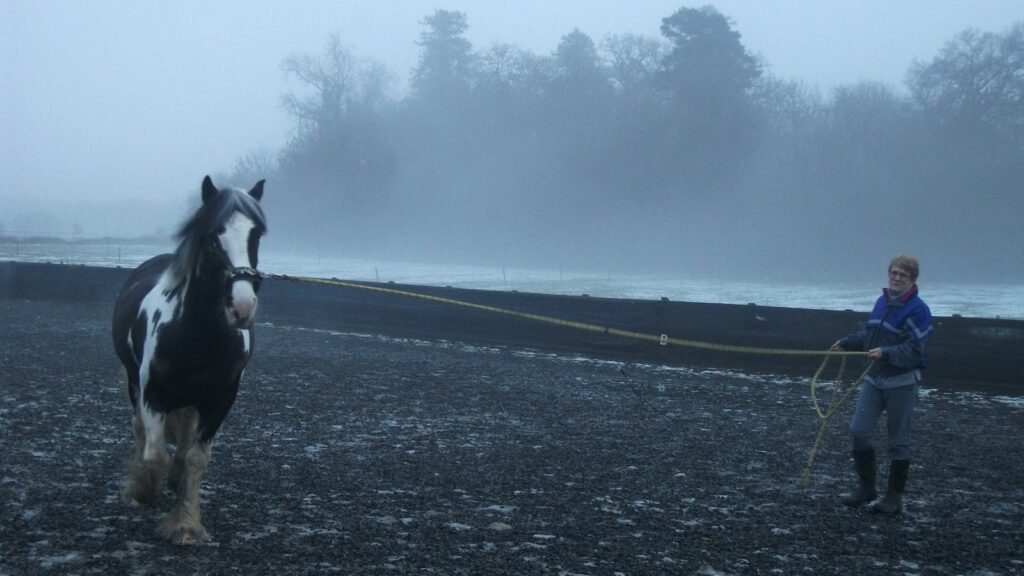
Curved pole arrangements address the common challenge of nervous horses that rush or become tense through turns and bending lines. Set up a large circle (approximately 20 meters diameter) with 4-6 poles arranged like spokes on a wheel, creating a visual guide for maintaining consistent bend. Alternatively, create a gentle curved line of 3-4 poles that follows a natural arc, encouraging the horse to maintain rhythm while navigating the bend. These exercises develop lateral flexibility while teaching the horse to maintain balance through turns rather than rushing or falling inward. The mental focus required to navigate curved poles often has a calming effect on anxious horses, as it channels their energy into the specific task of foot placement. Additionally, mastering curves and bends creates greater steering confidence, which proves invaluable when encountering real-world obstacles outside the arena.
Elevating Poles for Advanced Confidence Building

Once comfortable with ground poles, strategic elevation creates new dimensions of challenge and engagement. Begin by raising just one end of several poles about 6-8 inches using blocks or risers, creating a gradual “staircase” effect that enhances proprioception (awareness of body position). This slight elevation requires more deliberate foot placement and encourages the horse to lift their legs rather than shuffle over obstacles. For horses with specific anxiety about height or depth perception, alternate raised and ground-level poles to create predictable patterns with manageable challenges. As confidence increases, symmetrically raised poles (elevated equally on both ends) can be introduced, though height should remain modest (under 12 inches) to maintain focus on confidence rather than jumping technique. These elevated exercises dramatically improve physical coordination while simultaneously building psychological resilience around changing obstacle dimensions.
Using Poles to Address Specific Anxiety Triggers

Pole exercises can be strategically designed to address particular sources of anxiety in horses. For those fearful of crossing water, blue tarps placed beneath poles create visual exposure to water-like surfaces while the poles themselves provide a structured crossing point. Horses anxious about narrow spaces can benefit from poles placed parallel to create lane-like pathways that gradually narrow as confidence increases. For noise sensitivity, poles wrapped with crinkly materials or placed on different surfaces (creating various sounds when struck) build tolerance through controlled exposure. Arena-bound horses can gain confidence for trail riding through pole arrangements that mimic natural obstacles like ground level “logs” or “streams.” These targeted exercises create controlled environments where specific fears can be addressed incrementally, allowing the nervous horse to build confidence through repeated successful experiences with triggers that previously caused anxiety.
Developing Rhythm and Pace Control

Nervous horses often struggle with consistent rhythm, tending to rush through exercises or alternate between hurrying and hesitation. Properly spaced pole sequences function as external pacesetters, creating clear rhythmic patterns that help regulate tempo. Begin with 4-5 poles at walk spacing (approximately 4.5 feet apart), focusing exclusively on maintaining the same rhythm through the entire sequence, which develops the horse’s internal metronome. Once walking confidently, introduce trot poles (approximately 4.5-5 feet apart), where the faster gait challenges the horse’s ability to maintain emotional control while processing quicker footfall patterns. Incorporate rhythm transitions by connecting walking poles directly to trotting poles, teaching the horse to adjust pace smoothly rather than abruptly. These exercises develop self-carriage and balance, reducing the nervous tendency to rely excessively on the rider for regulation and building independent confidence through consistent, predictable movement patterns.
Positive Reinforcement Strategies During Pole Work
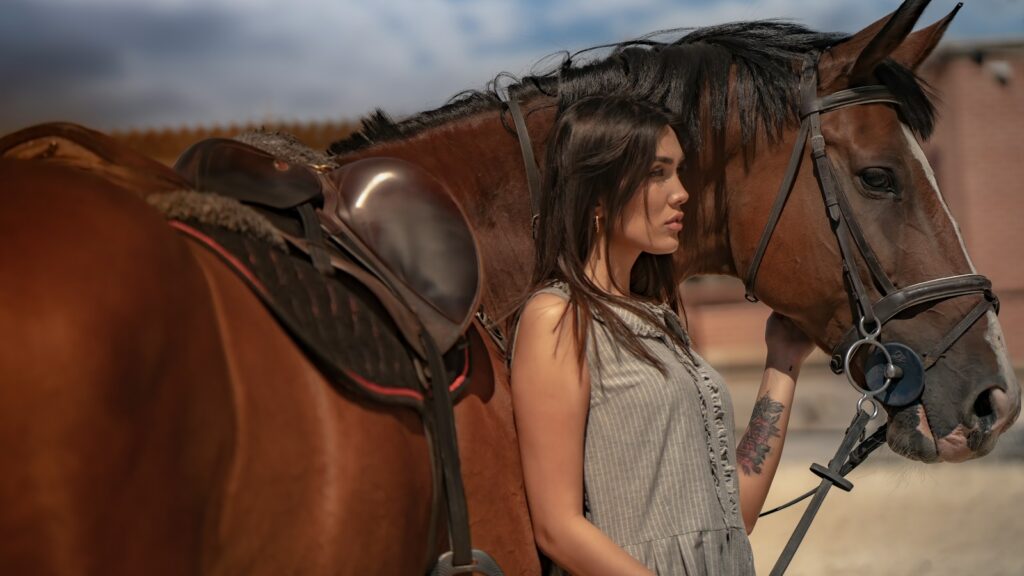
Effective reinforcement transforms pole exercises from mere physical tasks into confidence-building experiences for nervous horses. Timing rewards precisely for moments of bravery or relaxation creates clear associations between positive behavior and positive outcomes. Verbal praise delivered in a calm, low tone immediately after successfully navigating a challenging pole configuration helps the horse recognize their achievement. For food-motivated horses, strategically placed treats at the end of difficult pole sequences provide concrete rewards for persistence through anxiety-producing scenarios. Physical reassurance through brief pauses for neck scratches or wither rubs at successful completion points helps anxious horses process their accomplishments. Perhaps most importantly, recognizing small improvements rather than expecting perfection honors the significant mental effort nervous horses expend when confronting fear, building their confidence through acknowledgment of incremental progress rather than creating pressure for flawless performance.
Troubleshooting Common Issues with Nervous Horses
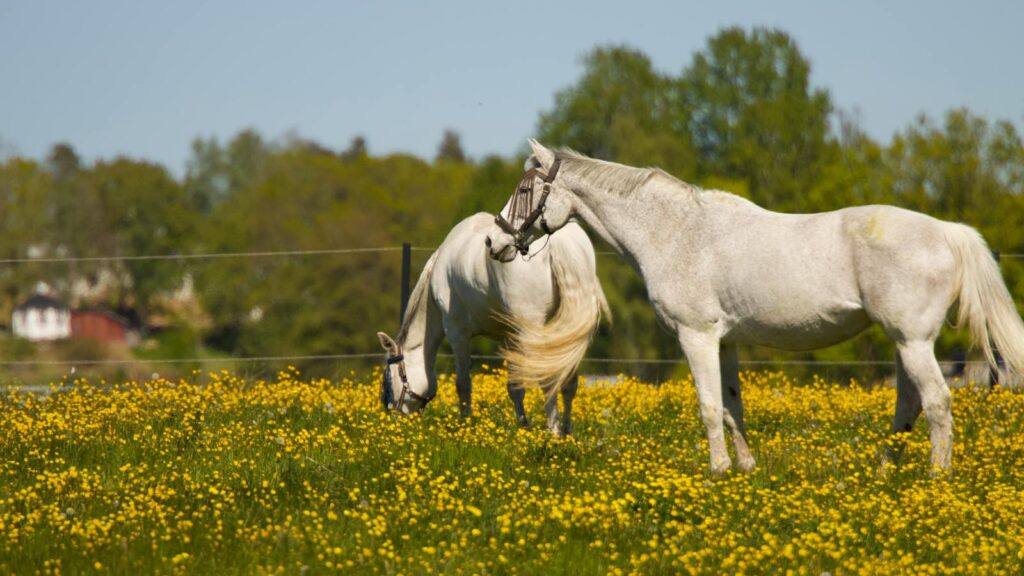
Even with careful planning, challenges commonly arise during pole work with anxious equines. Horses that rush or leap over poles rather than stepping calmly often need a return to basics – try wider spacing and fewer poles while focusing exclusively on maintaining walking tempo regardless of pole presence. For horses that stop or balk before poles, avoid direct confrontation; instead, approach at angles that feel less threatening, use ground handling before mounting, or pair them with a confident lead horse who demonstrates appropriate pole navigation. Horses distracted by environmental factors benefit from strategic arena positioning, placing poles away from doorways or arena edges that trigger vigilance behaviors. When serious regression occurs, resist the urge to force compliance; instead, temporarily simplify exercises while investigating potential physical discomfort or pain that might be contributing to the behavioral change. Patient, consistent problem-solving builds more lasting confidence than pushing through resistance, which often reinforces anxiety rather than resolving it.
Progressing to Real-World Applications
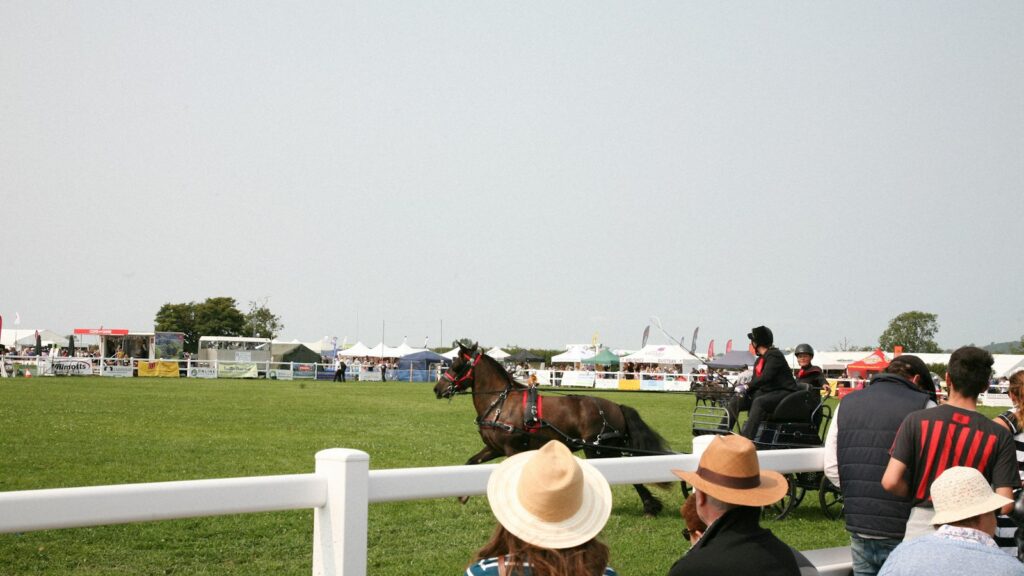
The ultimate goal of pole confidence-building extends beyond arena exercises to real-world competence. Once basic pole navigation feels comfortable, create simulations of actual scenarios the horse might encounter in daily work. Set up “trail obstacle” configurations with poles arranged as ground logs, small crossings, or narrow passages similar to bridge approaches. For competition-bound horses, introduce subtle environmental pressures like playing quiet music, having an audience of one or two people, or adding decorative elements similar to show environments. Practice loading exercises where poles create pathways leading to trailers or new environments, transferring the confidence developed in familiar settings to potentially stressful situations. Gradually incorporate movement and natural obstacles by taking pole-confident horses on light trail excursions where they can apply their improved body awareness and emotional regulation to actual terrain changes and environmental challenges, completing the bridge from controlled exercise to practical application.
Maintaining and Building on Progress

Sustaining confidence gains requires thoughtful maintenance and progressive challenges that prevent both boredom and overwhelm. Establish a consistent pole work schedule with sessions at least twice weekly to reinforce learning without creating dependency. Periodically revisit foundational exercises even as you advance to more complex patterns, which refreshes basic skills while providing confidence-boosting “easy wins” between more difficult challenges. Document specific configurations that particularly benefit your horse, noting which exercises create breakthrough moments versus those that trigger anxiety, allowing for personalized program development. Recognize that progress rarely follows a linear path – prepare for occasional setbacks by maintaining perspective on overall improvement trends rather than focusing on isolated difficult sessions. Most importantly, continue evolving pole exercises to match your horse’s developing abilities, gradually incorporating elements specific to your discipline goals while maintaining the fundamental focus on building a confident, thinking equine partner who approaches challenges with curiosity rather than fear.
conclusion

In conclusion, pole work offers a remarkably versatile and effective approach to building confidence in nervous horses. Through progressive, thoughtfully structured exercises, these simple tools create physical awareness, mental focus, and positive experiences that gradually replace anxiety with self-assurance. The beauty of pole work lies in its adaptability – exercises can be customized to address specific fears, accommodate individual learning styles, and develop skills relevant to any riding discipline. By prioritizing patient introduction, consistent reinforcement, and incremental challenges, riders can transform their nervous horses into confident partners capable of approaching new situations with curiosity rather than fear. Whether your ultimate goals involve trail riding, competition, or simply more enjoyable recreational riding, the foundation of body awareness and emotional regulation developed through pole work creates a more balanced, confident equine companion.

